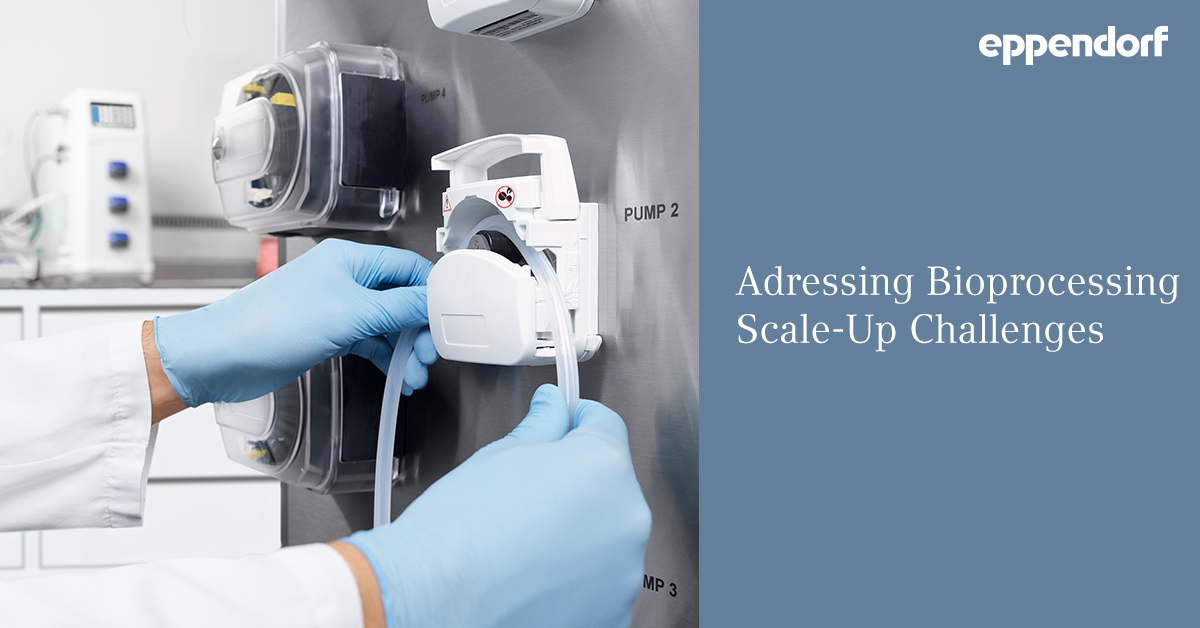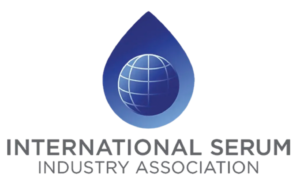
The Dish’s Weekly Biotechnology News Wrap Up – October 14, 2022
This week’s headlines include: COVID-19 shots prevented 650,000+ Medicare admissions last year, HHS says, Nanoscope Therapeutics Gets Fast Track Designation for MCO-010, Moderna and Merck will jointly develop a cancer vaccine for high-risk melanoma patients, Tavros signs $930M biobucks deal with Bayer’s Vividion in hunt for 4 oncology targets, FDA finalizes guidances on device post-approval studies, postmarket surveillance, and Ascidian Therapeutics rises from ATP’s ocean floor with $50M and Dyne’s former CEO.
Podcasts:
Check out our podcast channel. We have over 50 great podcasts covering drug discovery, stem cell culture, upstream and downstream biomanufacturing and more! Click below to download from iTunes or Google play:
![]()
![]()
In Case You Missed It, Recent Articles on Cell Culture Dish and Downstream Column:
![]()
Examining Bioprocessing Scale-Up Challenges and Technology Solutions
The number of novel cell and gene therapeutics gaining regulatory approval is on the rise to treat a variety of human diseases. Yet, these complex biologics-based therapies present challenges for drug companies as to the best approach to increase the manufacturing volumes in a cost-effective for mainstream use. Scale up and scale-out are the two main strategies utilized in the industry and the best choice can depend on several factors including the type of therapeutic, unit operation, and available technologies…
Upstream and Downstream Processes – A Holistic View
Not everyone has the luxury of building from the ground up. How do you create a unified system between upstream and downstream with existing equipment and processes? And if you have the ability to build from the ground up, how can you ensure that your design is future proof? We spoke with Phil Sanders, Biotech Chief Innovation Officer from Agilitech, to develop a set of best practices for creating a holistic process from upstream to downstream…
Solving the Solubility Challenge of Wnt Proteins with Gibco’s Wnt Surrogate-Fc Fusion Recombinant Protein
Wnt signaling is one of the key cascades regulating development and stemness during embryogenesis and is known to play a role in oncogenesis. Since their discovery, three Wnt signaling pathways have been characterized and all are activated by the binding of a Wnt-protein ligand to receptors belonging to the Frizzled (FZD) family and co-receptors such as lipoprotein receptor-related protein (LRP)-5/6. Wnt proteins are critical for numerous in vitro research applications ranging from stem cell differentiation strategies to the maintenance of epithelial stem cell–derived organoid models…
Cell and Gene Therapy Manufacturing and Commercialization US 2022 – Impressions of this year’s event
Informa Connect just concluded its Cell & Gene Therapy Manufacturing and Commercialization US event (CGT 2022). As part of Biotech Week Boston, a hybrid in-person and virtual event, it supported probably the most comprehensive biotech/biopharm event of the year…
A Multi-capillary Electrophoresis System Speeding Development Timelines for Biotherapeutics — Run Multiple Samples in Parallel with the BioPhase 8800 system
Today, we are analyzing more drug candidates with a wider range of modalities, all with the understanding that speed to market is more critical than ever before. As a result, scientists working on these candidates are looking for ways to increase throughput while maintaining robustness and reproducibility. While automated capillary electrophoresis (CE) instruments provide quicker…
New online Gene Therapy Academy offers great resources to support scaling up from lab to production scale
In this podcast, we spoke with Emanuel Krobath, Biopurification Specialist and Chiara Pacini, Bioprocess Specialist both with Pall Corporation about gene therapy process development including challenges and resources that are available for support…
VEGA VEGAPOINT 21®– a non-contact probe for point level control in hygienic bubble traps
Gas bubbles in process fluids and buffer solutions are a common yet significant problem in bioprocessing because they can alter the microfluidic environment and negatively impact downstream chromatography steps. They can impede the flow through the resin column and limit contact with the resin in the resin bed, which can decrease separation efficiency and resolution. A hygienic bubble trap is a device that effectively separates gas bubbles from process fluids by allowing the bubbles to rise to the top of the fluid (Figure 1). Effective separation of gas bubbles relies on accurate monitoring and control of the fluid level in the bubble trap—this is where level sensors come in. The working volume of a bubble trap is typically 60-80% of its total volume, and the fluid should have a residence time of approximately 15 seconds. If the level is too low, the gas bubbles don’t have sufficient residence time to be effectively removed from the process fluid and the bubbles may pass with the process fluid through the bubble trap outlet. Conversely, if the level of the fluid is too high, fluid and bubbles can be drawn into the gas vent line and cause problems with contamination…
Fit for Purpose AAV Purification – Realizing the Perfect Scale for Cell and Gene Therapies
The explosive advancements within the cell and gene therapy sector have the driven the demand for high-quality GMP-compliant viral vector manufacturing. Adeno-associated virus (AAV) has been the primary vector driving this growth, as well as to a lesser extend lentivirus (LV) and adenovirus (AV). The use of these vectors is expected to grow fast also in the future and to diversify to include other therapies, such as oncolytic viruses…
A Guide for Navigating the Single Use Technology Supply Chain
In this podcast we spoke with Derrick Alig, North American Western Regional Sales Manager for PSG Dover Biotech, Chris Couper, President and Founder of Liquidyne Process Technologies, and Phil Sanders Biotech Chief Innovation Officer at Agilitech about current supply chain challenges, possible solutions, what the future holds, and ways to navigate supply chain shortages to ensure manufacturers meet their timelines…
Important Processing Steps and Considerations in Oligonucleotide Manufacturing
The oligonucleotide industry is experiencing a surge of interest and momentum thanks to the discovery of the CRISPR-Cas9 system and the development of RNA-based vaccines and therapies. Oligonucleotides represent one of the most promising therapeutic modalities for the foreseeable future as evidenced by over 300 candidates in clinical trials. Industry insiders predict that roughly 10% of new drug approvals by the FDA will be oligonucleotide-based, which emphasizes the need to address some key challenges with how oligonucleotide manufacturing can be effectively and reproducibly scaled topping the list…
White Paper:
 The ebook “Addressing Bioprocessing Scale‐Up Challenges” deals with scale‐up, the process of increasing bioprocess dimensions, and the hurdles to be overcome during this process. It provides an overview of novel fields, such as cell and gene therapy, that require large amounts of cells to be produced and are therefore dependent on efficient scale‐up. However, as multiple parameters are influenced by increasing bioreactor dimensions, it is not easy to keep yields consistent between small‐ and large‐scale approaches. Therefore, in order to design the scale‐up process as efficient as possible, different strategies focusing on different parameters were established over time. Here, Eppendorf’s thought leaders will give you an overview of the current gold standards in scale‐up and share their opinions on advantages and disadvantages of different strategies. Furthermore, scale‐up of both bacterial and mammalian cell culture is experimentally demonstrated in this publication.
The ebook “Addressing Bioprocessing Scale‐Up Challenges” deals with scale‐up, the process of increasing bioprocess dimensions, and the hurdles to be overcome during this process. It provides an overview of novel fields, such as cell and gene therapy, that require large amounts of cells to be produced and are therefore dependent on efficient scale‐up. However, as multiple parameters are influenced by increasing bioreactor dimensions, it is not easy to keep yields consistent between small‐ and large‐scale approaches. Therefore, in order to design the scale‐up process as efficient as possible, different strategies focusing on different parameters were established over time. Here, Eppendorf’s thought leaders will give you an overview of the current gold standards in scale‐up and share their opinions on advantages and disadvantages of different strategies. Furthermore, scale‐up of both bacterial and mammalian cell culture is experimentally demonstrated in this publication.
To Download the full ebook, see Addressing Bioprocessing Scale‐Up Challenges
Training Video:
Headlines:
“COVID-19 shots prevented 650,000+ Medicare admissions last year, HHS says,” Becker’s Hospital Review
Federal COVID-19 vaccination efforts prevented more than 650,000 hospitalizations and 300,000 deaths among Medicare beneficiaries last year, HHS said in an Oct. 7 report. HHS’s Office of the Assistant Secretary for Planning and Evaluation analyzed Medicare claims and county-level vaccination data to estimate the reduction in deaths and hospitalizations in 2021. The national vaccination campaign was associated with 670,000 to 680,000 fewer hospitalizations and 330,000 to 370,000 fewer deaths among Medicare beneficiaries last year, the report found. These reductions were also associated with savings of more than $16 billion in direct medical costs, according to HHS…
“Nanoscope Therapeutics Gets Fast Track Designation for MCO-010,” FDA News
Nanoscope Therapeutics has received FDA’s Fast Track designation for its MCO-010, an investigational gene therapy for treatment of retinitis pigmentosa, a group of inherited diseases causing retinal degeneration and vision decline. MCO-010 delivers a gene directly into the vitreous at the back of the eye. The gene encodes for the light-sensitive multicopper oxidase (MCO) protein into retinal cells and enables the cells to detect light so patients may see again…
“Moderna and Merck will jointly develop a cancer vaccine for high-risk melanoma patients,” CNBC
Moderna and Merck will jointly develop and sell a cancer vaccine that is personalized for individual patients, the companies announced Wednesday. Moderna’s vaccine, based on its messenger RNA technology, is being studied in combination with Merck’s Keytruda to treat patients with high-risk melanoma, the deadliest form of skin cancer, in a phase two trial. The companies expect to report data in the fourth quarter of this year…
“Tavros signs $930M biobucks deal with Bayer’s Vividion in hunt for 4 oncology targets,” Fierce Biotech
Since being acquired by Bayer for $1.5 billion last year, Vividion Therapeutics remains bullish in its hunt for undruggable targets for cancer. The Californian biotech has partnered with Tavros Therapeutics to find four cancer targets, paying out $17.5 million cash with potentially up to $430.5 million to follow in biobucks. While those initial milestone payments are tied to a five-year search for the four targets, the agreement also means Vividion holds the right to opt in for up to five more oncology targets, giving Tavros the chance to garner a further $482 million in additional payments…
“FDA finalizes guidances on device post-approval studies, postmarket surveillance,” Regulatory Focus
The US Food and Drug Administration (FDA) on 7 October released two final guidances to assist manufacturers of moderate- to high-risk medical devices to comply with the agency’s postmarket surveillance requirements and to better understand the agency’s expectations for conducting post-approval studies of these products…
“Ascidian Therapeutics rises from ATP’s ocean floor with $50M and Dyne’s former CEO,” Fierce Biotech
Inspired by ocean “sea squirts,” Ascidian Therapeutics is floating to the surface with $50 million in series A treasure to fund its ambitions to rewrite RNA for therapeutic benefit. The company, launched by venture capital firm Apple Tree Partners, is led by former Dyne Therapeutics CEO Romesh Subramanian, Ph.D., according to Wednesday’s unveiling. The primary focus for the company will be further developing its lead asset targeting ABCA4 retinopathy, including Stargardt disease, which the biotech said is moving toward an application to enter the clinic. The company did not include a more detailed timeline on when it expects to start phase 1 trials…
